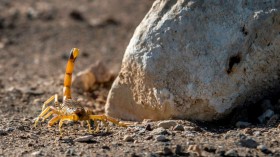Researchers have now reversed memory loss in animal brain cells. The study could help people who suffer from memory-robbing diseases like dementia and Alzheimer's disease.
The study was conducted on the nerve cells of a sea-snail called Aplysia californica, which has a simple nervous system, but has cells that are similar to the kind of cells found in humans.
"Although much works remains to be done, we have demonstrated the feasibility of our new strategy to help overcome memory deficits," said John "Jack" Byrne, Ph.D., the study's senior author, from the UTHealth Medical School.
The researchers reversed memory loss by determining when the cells were more likely to learn new information. The study team could predict the learning ability of a cell by using a mathematical model designed by Yili Zhang, Ph.D., who is a research scientist at the UTHealth Medical School and co-author of the study.
Zhang and colleagues had described this model in detail in a study published in 2011 in the journal Nature Neuroscience.
The model by Zhang is based on five training schedules which were given at different time intervals, from five to 50 minutes. The model looks for certain biochemical changes taking place in the cells which show that the cell is primed for learning.
"The logical follow-up question was whether you could use the same strategy to overcome a deficit in memory," Byrne said in a news release. "Memory is due to a change in the strength of the connections among neurons. In many diseases associated with memory deficits, the change is blocked."
In the study, researchers first blocked a gene that codes for a protein for memory, thus disrupting a biochemical change in the cell. This was done to induce a kind of memory disorder in the cells that impaired long-term storage of memory.
The study mimicked the training sessions by adding chemicals at specific intervals (that the model had described). When the chemicals were administered to the cells, they were able to restore the strength of connections in the cells. Researchers say that the strategy could work in humans as well, although it would take many more studies to find the biochemical processes that were leading to memory storage.
"This methodology may apply to humans if we can identify the same biochemical processes in humans. Our results suggest a new strategy for treatments of cognitive impairment. Mathematical models might help design therapies that optimize the combination of training protocols with traditional drug treatments," Byrne said.
The study is published in The Journal of Neuroscience.
© 2024 NatureWorldNews.com All rights reserved. Do not reproduce without permission.





